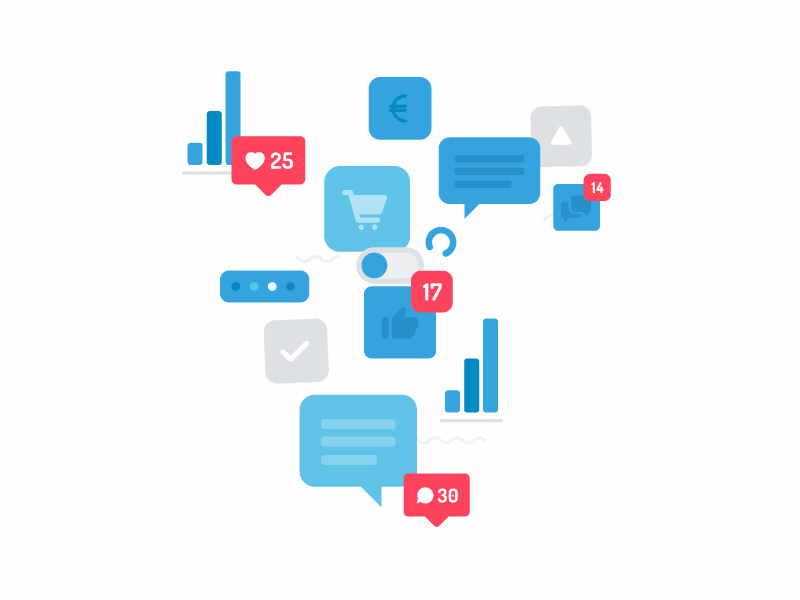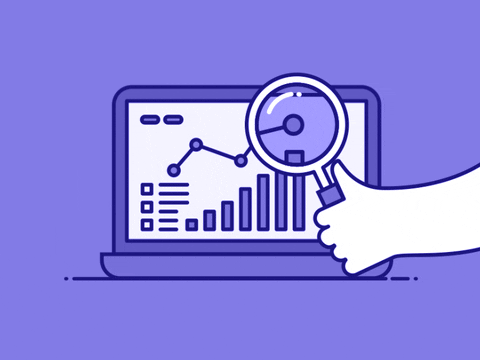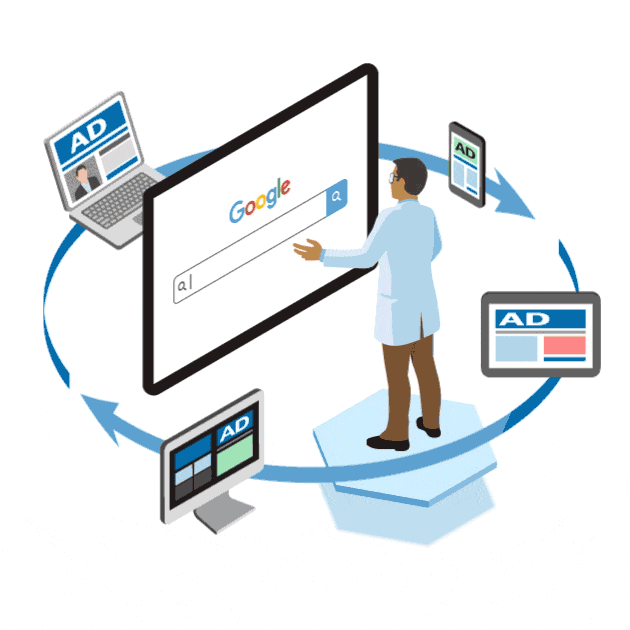What is Performance Marketing and How It Works?
In today’s world, carving a niche for your business online can feel like navigating through a maze. Perhaps you’ve dabbled in various digital marketing strategies with the aim of drawing customers closer, yet it feels as though you’re not quite hitting the mark.
We understand that frustration all too well. Along our journey, we stumbled upon performance marketing – a brilliant approach where costs are only incurred when actual results are achieved, such as securing a sale or generating a lead.
Interestingly enough, in performance marketing, advertisers fork out funds solely for specific user actions.
This blog post is designed to walk you through the ins and outs of performance marketing in an easy-to-grasp manner. We’ll enlighten you on how crafting smart objectives can assist in homing in on your ideal audience and discuss why it’s crucial to spread your budget across diverse channels judiciously.
If the idea of making every penny of your advertising spend truly matter appeals to you, then this piece promises to be an invaluable asset in boosting your campaign’s ROI whilst deftly managing customer acquisition.
Eager to witness growth? Then keep on reading!
Defining Performance Marketing
Performance marketing is a type of digital advertising. It focuses on results and specific actions.
Explanation of digital marketing
Digital marketing connects businesses with their customers online. It uses various channels to reach target audiences. We can use social media, search engines, websites, and more to promote our products or services.
This strategy focuses on driving measurable results. It helps us to track actions like clicks and conversions.
In performance marketing, advertisers pay only for specific actions. These actions can be leads, sales, or clicks. This method ensures we get value for our spending. We only pay when we meet our campaign goals.
This makes digital advertising a cost-effective solution for us.
Performance marketing allows us to measure every part of our campaigns. We can analyse data to see what works best. This results-driven marketing gives us the power to refine our strategies.
We can make changes based on real-time results. It also includes diverse methods like affiliate marketing and pay-per-click campaigns. Each type offers unique advantages for our business growth.
Key takeaways
Performance marketing offers a way to reach specific goals. It focuses on measurable results. Here are some key takeaways.
- Performance marketing is all about results. We only pay when we achieve goals like leads, sales, or clicks.
- Advertisers track every action closely. This makes performance marketing highly accountable and easy to measure.
- Each campaign drives specific actions that matter most to us. These can include downloading a brochure or making a purchase.
- Setting SMART goals is crucial. SMART stands for Specific, Measurable, Achievable, Relevant, and Time-bound.
- Knowing our target audience helps us tailor our campaigns effectively. We reach the right people with the right message.
- Establishing a clear budget improves our spending strategy across channels. This ensures we do not overspend while still getting results.
- Balancing paid and free strategies can increase effectiveness. Combining these methods often leads to better outcomes.
- Different digital marketing channels allow us to connect with potential customers in various ways. Examples include social media, email, or search engines.
- Each type of channel has its advantages and drawbacks that we should consider before launching campaigns.
- Tracking and analysing data is vital for growth in performance marketing efforts. We must regularly review what works and refine our strategies based on this information.
Next, we’ll explore how performance marketing works in more detail.
How Performance Marketing Works
Performance marketing works by setting clear goals. We define what success looks like and measure progress.
Setting SMART goals
Setting SMART goals is essential for our performance marketing strategy. These goals help us stay focused on what we need to achieve.
- Specific: Our goals must be clear and specific. Instead of saying we want more website visits, we should state, “We aim to increase our website visits by 20% in three months.” This gives us a precise target to hit.
- Measurable: We need ways to measure our success. For example, tracking the number of leads generated or sales made can show us if we’ve met our goals. Using metrics like conversion rates and cost per action (CPA) helps us see what works.
- Achievable: Our goals should be realistic. Setting a target that is too high can lead to frustration. If we currently have 100 leads, aiming for 1,000 in a month may not be possible. Aiming for a 25% increase might be better.
- Relevant: Goals must align with our overall business objectives. If our main aim is to improve conversion rates, setting a goal to increase social media followers may not directly help us achieve this aim.
- Time-bound: Setting deadlines keeps us accountable. We should establish a time frame for each goal, such as hitting our lead generation target by the end of the quarter. This pushes us to prioritise tasks and check progress regularly.
Using SMART goals in performance marketing helps ensure that we are results-oriented and focused on achieving specific marketing outcomes through actionable steps.
Identifying target audience
Identifying the right target audience is crucial in performance marketing. It helps us connect with the people who need our products or services.
- Know Who We Want to Reach: We first define our ideal customer. This includes their age, gender, interests, and location. Understanding these details allows us to tailor our messages effectively.
- Use Data-Driven Insights: We analyse data from past campaigns to see who engaged with us before. Performance marketing gives us measurable results on clicks and conversions, so we can make informed decisions.
- Segment Our Audience: We break down our audience into smaller groups based on shared traits. This helps us create specific messages that resonate with each group.
- Create Buyer Personas: Developing detailed profiles for each segment is essential. These personas represent our typical customers and guide our strategies in online campaigns.
- Test and Optimise: We can run tests to see which audiences respond best to different messages or offers. Performance marketing allows us to track these responses closely.
- Engage Across Channels: Knowing where our audience spends time helps us choose the right marketing platforms. Different channels like social media or email may work better for different groups.
- Stay Updated on Trends: People’s interests change over time, so we must keep an eye on trends in our market. Regularly updating our target audience profile ensures we stay relevant.
- Evaluate Return on Investment (ROI): Checking how well we reach and convert our target audience helps improve future efforts. Using cost per action (CPA) metrics can clarify what works best for lead generation marketing.
- Involve All Team Members: Everyone in our business should understand who the target audience is, including sales and customer service teams. They can offer valuable insights about customer needs and preferences.
- Listen to Feedback: Gathering feedback from current customers reveals important information about their experiences and expectations. This insight allows us to refine our approach continually.
Focusing on identifying our target audience sets the stage for a successful performance marketing campaign by establishing SMART goals next.
Establishing a budget for each channel
After identifying our target audience, we move on to setting a budget for each channel. This step is crucial in performance marketing. It helps us control costs and maximise results.
- Determine overall marketing budget: Start by deciding how much money we can spend in total on marketing this month or year. Having a clear figure helps set the stage for specific channel budgets.
- Allocate funds based on goals: We need to think about what we want to achieve with each channel. If our goal is sales, we might put more money into channels like Pay-Per-Click (PPC) advertising or Conversion-Focused Marketing.
- Consider cost per action (CPA): Each channel has different costs tied to actions such as clicks, leads, or sales. Understanding these costs helps us allocate the right amount of money to each one.
- Use historical data: Look at past campaigns to see which channels worked best for us. If certain channels brought in good returns, it makes sense to invest more there.
- Test and adjust: It’s vital to monitor how each channel performs after we start spending money. If one isn’t getting results, we should be ready to shift our budget elsewhere quickly.
- Balance paid and free strategies: While some activities will require payment, others may not cost anything but can still drive results through Search Engine Optimisation (SEO) efforts or social media engagement.
- Monitor return on investment (ROI): Regularly check the ROI of each channel. This lets us know if we’re making wise choices with our budgets while focusing on outcomes-based marketing.
Establishing a budget requires an understanding of many moving parts in performance marketing. Taking these steps ensures we invest wisely and drive measurable results for our business growth.
Utilising a balance of paid and free strategies
Establishing a budget for each channel is just the first step. Next, we can use a mix of paid and free strategies to get the best results. Paid strategies, like pay-per-click (PPC) advertising, let us reach specific goals quickly.
We pay only when someone clicks our ad or takes action. This is an effective method.
Free strategies also play an important role. Tools like search engine optimisation (SEO) help us attract organic traffic. These methods save money while still driving results. Combining both allows us to connect with our target audience effectively.
Performance marketing thrives on this balance. It enables us to measure everything and optimise our campaigns for better outcomes.
Benefits and Types of Performance Marketing
Performance marketing offers great benefits, like better targeting and cost savings. We can use different digital channels to reach our goals. Each channel has its own strengths. This strategy helps us achieve more for less money.
Interested in learning how we can make the most of these options?
Improved targeting and cost-effectiveness
Performance marketing helps us target the right audience more effectively. This strategy allows us to see who engages with our ads. We can reach people who are likely to convert. Improved targeting means we spend less on ads that do not work.
Each penny counts, especially when we only pay for specific actions like clicks or sales. This makes performance-based advertising very cost-effective.
Cost-effectiveness is key to our success. We can set a clear budget for each channel. By choosing the best marketing channels, we maximise our return on investment (ROI). Each channel has unique advantages.
For example, pay-per-click (PPC) ads can drive quick traffic to our site, while search engine optimisation (SEO) builds long-term results. We can mix these strategies to find the best fit for our goals.
This results-oriented approach ensures we focus on actions that lead to growth.
Types of digital marketing channels
We need to know about different digital marketing channels. These channels help us reach our target audience effectively.
- Search Engine Marketing (SEM): This channel includes paid ads on search engines like Google. We pay for clicks on our ads, which is also known as Pay-per-click (PPC). SEM helps us appear at the top of search results when users look for relevant terms.
- Social Media Advertising: Social media platforms like Facebook and Instagram allow us to run targeted ads. We can reach specific demographics by choosing age, location, and interests. This strategy improves our chances of converting users into customers.
- Affiliate Marketing: In this model, we collaborate with affiliates who promote our products or services. We only pay them a commission when they generate leads or sales. This method is often called performance-based advertising because we pay for actions taken by potential customers.
- Email Marketing: Email remains a strong tool in performance marketing. We can send personalised messages to our subscribers and track open rates and clicks. The focus here is on conversion-focused marketing, aiming to drive traffic to our website.
- Content Marketing: Creating valuable content helps us attract an audience organically. Blogs, videos, and infographics provide information that users find useful. Search engine optimisation (SEO) plays a key role here, helping our content rank higher in search results.
- Display Advertising: This involves banners or images shown on websites within the Google Display Network or other platforms. We only pay when someone clicks on our ad, making it cost-effective and action-based marketing.
- Influencer Marketing: Working with influencers allows us to tap into their followers’ trust and engagement levels. Influencers share our brand through their channels, driving traffic toward our objectives while promoting conversions.
- Retargeting Campaigns: These ads target users who have previously visited our site but did not convert. We can remind them of what they left behind, improving chances of completing the desired action later on.
- Cost Per Acquisition (CPA): This metric ensures we only spend when we acquire a customer through specific actions like sales or sign-ups. It aligns with what makes performance marketing unique; we focus on measurable outcomes that benefit the business financially.
- Mobile Advertising: Many people use smartphones today; thus, mobile advertising targets these users directly through apps or mobile-friendly sites causing high engagement rates with goal-oriented marketing strategies.
Using these channels will boost our performance marketing efforts while helping achieve measurable results efficiently.
Advantages of each type
Performance marketing brings us a unique set of benefits across various types of channels. We use this strategy to ensure every penny we spend is towards achieving our marketing goals. Here’s a look at the advantages of each type of performance marketing channel we employ.
| Type of Channel | Advantages |
| Affiliate Marketing | Cost-effective, as we only pay for achieved results. Expands our reach through affiliates’ networks. |
| Search Engine Marketing (SEM) | Boosts our visibility on search engines instantly. Drives targeted traffic to our website. |
| Social Media Advertising | Offers advanced targeting options. Engages with our audience where they spend a lot of their time. |
| Email Marketing | Provides direct communication with our audience. Allows for personalised messages, increasing effectiveness. |
| Native Advertising | Blends with the platform it’s on, making it less intrusive. Improves user experience and engagement. |
| Influencer Marketing | Leverages the trust influencers have with their followers. Enhances our brand’s credibility and reach. |
By focusing on these channels, we ensure that our marketing efforts are not just about spending money but about investing in our growth. Tracking every action allows us to see what works best and optimise our strategies for better results. This way, we achieve our business goals more efficiently.
Measuring and Achieving Growth in Performance Marketing
Measuring success in performance marketing is key. We can track data to see what works best and make smart choices for growth.
Importance of tracking and analysing data
Tracking and analysing data is vital for performance marketing. This method allows us to measure every part of a campaign. We can see what works and what doesn’t. For instance, we track clicks and conversions.
These numbers help us make better decisions.
Specific marketing goals drive our strategies. We focus on cost-per-action (CPA) and return on investment (ROI). When we see data showing strong results, we know we are on the right path.
Our approach is results-oriented, which means we pay only when we achieve our goals.
Optimising our marketing efforts relies on this data. We refine our strategies based on what the data shows us. This way, we can improve targeting and increase cost-effectiveness. Through this, we grow our businesses.
Performance marketing helps us reach our audience and achieve real results.
Strategies for optimising and refining efforts
In performance marketing, we focus on achieving specific results. This method is all about tracking what works best.
- Set clear goals. We should establish SMART goals that are Specific, Measurable, Achievable, Relevant, and Time-bound. This helps us to stay focused and evaluate our success clearly.
- Know our audience well. Identifying our target audience allows us to create better campaigns. Knowing their interests and needs increases the chances of leads and sales.
- Use a balanced budget. We need to allocate funds wisely across different channels. It is essential to find a balance between paid ads like Pay-per-click (PPC) and free strategies such as Search engine optimisation (SEO).
- Measure performance regularly. Tracking our campaigns shows what works and what doesn’t. Performance-based advertising lets us pay only for actions like clicks or conversions.
- Analyse data consistently. The importance of data analysis cannot be overstated in performance marketing. It helps us refine strategies based on real-time information.
- Test different approaches often. Experimenting with various advertising methods can lead to new insights about our audience’s preferences.
- Adapt quickly based on results. If a strategy isn’t working, we must refine it immediately rather than waiting longer periods.
- Use multiple channels effectively. Combining techniques from various digital marketing channels maximises reach and engagement with potential customers.
- Focus on customer feedback always. Listening to customers helps tailor our efforts for better conversion-focused marketing outcomes.
- Learn from competitors frequently. Observing what works for others gives us ideas for improving our own campaigns in action-based marketing.
These steps will help us optimise our efforts in performance marketing effectively while ensuring we achieve sustainable growth in business performance moving forward.
Realising overall business growth through performance marketing
Performance marketing drives our business growth by focusing on measurable outcomes. Each campaign is results-oriented. We pay only when we achieve specific goals, like leads or sales.
This cost-per-action (CPA) model makes our spending effective.
Tracking and analysing data helps us optimise our strategies. We learn what works best for our target audience. Each click and conversion provides insights to refine our approach. With a return on investment (ROI) focus, we can see clear results.
Ultimately, performance marketing allows us to connect with our audience and grow our business in a smart way.
FAQs
1. Can you explain what performance marketing is?
Performance marketing, also known as results-driven or outcome-based marketing, is a strategy where businesses only pay when specific actions are completed. These actions can include clicks (pay-per-click), acquisitions (cost-per-acquisition) or any conversion-focused metrics.
2. How does performance marketing work?
Using methods such as search engine optimisation and cost per action strategies, performance marketers focus on achieving specific results. The aim is to get the highest return on investment by focusing on conversions rather than just visibility.
3. What makes up an action in action-based marketing?
An ‘action’ in action-based or pay-per-performance marketing could be anything from a customer clicking an ad (PPC), making a purchase (CPA), or even reaching a certain page of your website through SEO efforts.
4. Is goal-oriented marketing the same as ROI-focused Marketing?
Yes, both terms refer to strategies that prioritise achieving specific goals over other aspects of advertising campaigns. The main goal often involves maximising return-on-investment (ROI).
5.What’s unique about performance-based advertising compared to traditional methods?
The uniqueness lies in its results-oriented approach which ensures advertisers only pay for successful outcomes rather than just exposure. This makes it more cost-effective and measurable compared to traditional forms.










